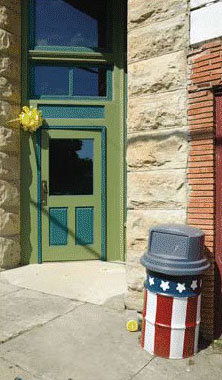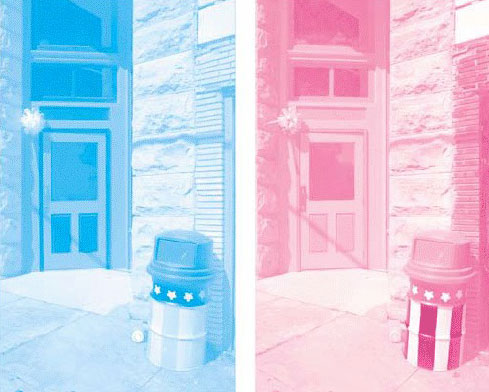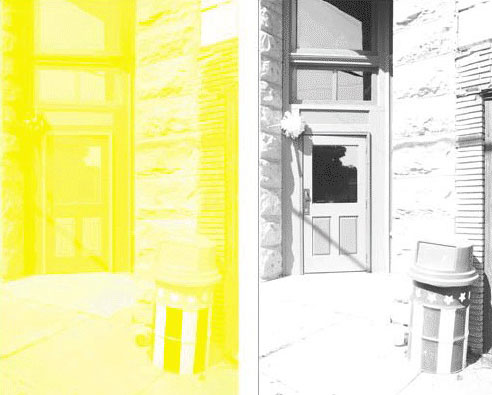- Relief printing
- Intaglio and planographic printing
- Color printing
- Bits and pieces
- Early photography in silver
- Non-silver processes
- Modern photography
- Color notes
- Color photography
- Photography in ink: relief and intaglio printing
- Photography in ink: planographic printing
- Digital processes
- Where do we go from here?
Color separations

A digital photograph made by Richard Benson. © Richard Benson
The way in which Maxwell’s work has been used, in both printing and photography, is through color “separations.” His principle of selecting three points in the spectrum and recording the color values at those points to define a wide range of colors found a practical application through photographic records of colored objects made with filtration in the primary colors. These color separations were routinely made with red, green, and blue filters to record the values that were subsequently printed with cyan, magenta, and yellow. Color photography, which we come to in the next section, uses complex coatings with three light-sensitive layers that each respond to a particular primary, all applied to a single substrate. The examples shown on the next pages are a hypothetical set of color separations made to be printed in the subtractive primaries of cyan, magenta, and yellow. On the printing press these separations need to be accompanied by a fourth printer that uses black ink, denoted by the letter “K” (the letter “B” was not used to avoid confusion with blue), leading to the abbreviation CMYK for this system of printing.

A sample set of color separations: starting left, cyan; magenta. These are single impressions of the actual separations used to make the full-color reproduction on the first page. © Richard Benson
In an ideal world the three primaries, when printed together at full strength, would produce a black value, but things don’t work out that way: the dyes or pigments in the inks are not strong enough, and it is very difficult to print three heavy layers of wet ink on top of each other. These problems are solved by using a fourth printer, in black ink, which only affects the darker values in the picture. Photographic papers need no black layer, since the dyes are stronger, and there is none of the handling difficulty that exists with heavy layers of ink.

A sample set of color separations: starting left, yellow; and black. These are single impressions of the actual separations used to make the full-color reproduction on the first page. © Richard Benson

